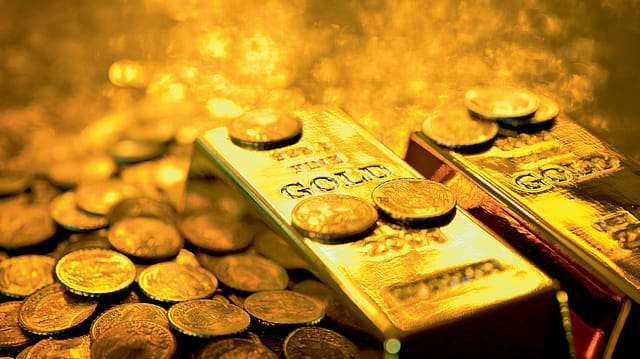What's Behind Central Banks' Gold Rush?

AURUM HAS become more attractive in 2022, it seems. In 2022, central banks globally accumulated gold reserves at a pace last seen in 1967, when global finance followed diktats of Bretton Woods protocol and the U.S. dollar was backed by gold. Central banks bought a net 1,404 tonnes of gold in 1967. However, since 1971, when the U.S. abandoned the Bretton Woods Agreement, the gold buying spree by central banks diminished. For the first time since 1971, the world is witnessing the same spree as the net purchase of central banks across the globe amounted to 673 tonnes in the first nine months of 2022. It also lifted global official gold reserve to its highest level since November 1974 (36,782 tonnes).
Earlier, in 2021, central banks added 463 tonnes of gold to their global reserves, 82% higher than 2020. Total gold acquisition reached almost 400 tonnes in July-September quarter of 2022, 86% of central banks' total annual gold buying of 2021.
Interestingly, central banks' renewed love for the yellow metal surfaced in the backdrop of a strengthening dollar index that hit a two-decade high in September 2022. Why central banks are buying gold even when bond yields are rising and gold prices are declining? This affinity towards yellow metal also begs a question — are monetary authorities of various nations losing faith in the U.S. dollar, in particular, and Fiat currencies, in general? Or is it by compulsion that nations are buying gold?
BUSINESS COMPULSION?
The forex reserves of most of the central banks shrank with the rising dollar index and in such a scenario, gold buying spree indicates trust of the authorities in the yellow metal in times of geo-political uncertainty.
With the hike in interest rate by the U.S. Federal Reserve and the European Central Bank, commodity importing nations are facing a double whammy of surge in dollar rates and commodity prices.
The Russian block is using commodities as its arsenal to wield its power over the world. The U.S. and allies are using rate hikes as a weapon to destroy demand for commodities.
Interestingly, nations that went on a gold buying spree are the ones heavily dependent on Russia for grains, fuel and other natural resources. With the purchase of 103 tonnes of gold till October, the Central Bank of Turkiye (Turkey) emerged as the largest buyer of gold. Similarly, Egypt bought 44 tonnes of gold in the first quarter (January-March) of 2022, more than any other central bank. Both these nations are the largest buyers of grain from Russia. Without ensuring food security, political stability cannot be achieved in these nations.
Geo-political uncertainty or sanction by super powers such as Russia and the U.S. also propelled these nations towards gold, a time-tested monetary unit.
Post invasion of Ukraine, the U.S. froze offshore bank accounts of Russia, which made the dollar rather repulsive as a mode of payment for Russians. This leaves no choice for nations than to pay in gold or in a currency accepted by Russia for its products.
WHAT LIES AHEAD
The Fed started modest rate hikes in the last quarter of 2016, but halted in the end of 2018. The Fed pivot provided a big boost to gold and central banks cumulatively bought 656.2 tonnes of gold in 2018 and 605.4 tonnes in 2019.
Gold price movement in future depends on when the Fed will pivot and halt rate hikes. Gold, like any other commodity, depends on the game of demand-supply, but being a part of central banks' reserve (war chest), prices of the yellow metal depend heavily on buying tendencies of these monetary organisations.
Till the time the cold war between Russia, through commodities, and the U.S., through dollar and interest rate movements, continues, it is unlikely that the yellow metal will lose its sheen.